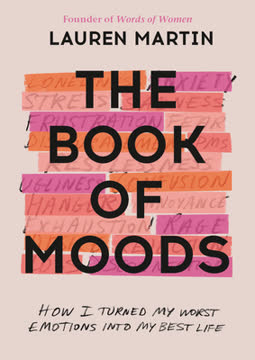Key Takeaways
1. Understand Your Moods: They Are Triggered Lessons
I finally understood that moods didn’t come out of thin air.
Moods are not random. The author's journey began with the realization that her intense, seemingly uncontrollable feelings were not random but were triggered by specific, often insignificant, external events like an email, a comment, or a photo. Unlike fleeting emotions (lasting 60-90 seconds), moods are the lingering state that results from choosing to keep igniting the thought or feeling associated with the trigger.
Triggers are personal. These triggers are unique to each individual, acting as a "buzzer" that signals something within needs attention. Trying to avoid triggers is futile; they are an unavoidable part of life's unpredictable circumstances. Instead of being made miserable by triggers, the author learned that her reactions to them were the source of suffering.
Moods can be transformed. By becoming aware of her moods and the triggers that prompted them, the author gained distance and the ability to study herself. This awareness allowed her to move from being ruled by her moods to understanding and transforming them into knowledge, power, and calm, ultimately leading to a better life.
2. Anxiety: Stay Present and Reframe Stress as Challenge
Anxiety was nothing more than thinking.
Anxiety is future/past thinking. This mood, characterized by tension and worried thoughts, often stems from dwelling on past regrets or future fears. Women are particularly prone to anxiety, worrying twice as much as men and making stronger connections between past negative events and potential future ones (anchoring).
Stay present. The key to managing anxiety is to pull your mind back to the present moment. Like writers focusing on one word at a time, or meditators noticing wandering thoughts, the goal is simply to observe when your mind drifts to the past or future and gently redirect it. This practice, like "swiping left" on unwanted thoughts, builds a habit of presence.
Reframe stress. Instead of viewing stressful situations as threats, perceive them as challenges. Research on telomeres shows that viewing stress as a challenge, rather than a threat, can prevent the negative physiological effects of chronic stress and maintain well-being. Accepting the worst possible outcome can also paradoxically reduce anxiety by eliminating the fear of uncertainty.
3. Beauty Moods: Detach from Ego and Practice Self-Acceptance
There is no agony like feeling ugly.
Beauty moods stem from ego. Feelings of inadequacy and self-hatred related to appearance are deeply tied to the ego and a mindset of "self-cherishing," where one believes their desires (like looking perfect) are paramount. This obsession with the outer self leads to a constant state of fixation and unfulfillment.
Practice selflessness (Tonglen). The antidote to self-cherishing is selflessness. The Buddhist practice of Tonglen involves breathing in the pain of others (including those feeling unattractive or insecure) and breathing out relief and compassion. This turns selfish obsession into connection and reminds you that you are not alone in your suffering.
Challenge perceptions. Realize that your perception of your own appearance is often distorted by flaws you fixate on, while others see you as a whole person. Avoid "mirrors" like social media that reinforce negative comparisons. Instead of striving to be "pretty like her," embrace being "pretty like you," reinforcing positive messages to counteract the brain's negativity bias.
4. Work Moods: Manage Your Willpower and Build Rituals
The more we suppress the stuff we want and do the stuff we don’t want to do, the less self-control we have later.
Willpower is finite (Ego Depletion). Moods related to work, tasks, and daily obligations often stem from ego depletion, the psychological theory that willpower is a limited resource that gets drained throughout the day. This depletion leads to irritability, poor decisions, and difficulty resisting bad habits.
Say no and build rituals. To combat depletion, learn to say no to unnecessary commitments that drain your energy. Additionally, build small, indulgent rituals into your routine. These "small treats," like a specific tea or a walk, act as moments of pleasure that can counteract depletion and restore willpower, making you more resilient to daily stressors.
Remove excess choice. Decision fatigue is a major drain on willpower. Eliminate unnecessary choices throughout your day, especially when depleted. This could involve planning meals in advance, setting strict rules around vices (abstaining completely is often easier than moderation), or automating routine decisions. Reframing tasks from "have to" to "get to" can also shift perception and reduce depletion.
5. Friendship Moods: Heal Disconnection Through Self-Love and Effort
Emotional distress... is always the result of disconnection...
Friendship moods stem from disconnection. Feelings of loneliness, paranoia, and hurt related to friendships are often rooted in disconnection from others, the self, or community. Women's sense of self is deeply tied to relationships, and disruptions can feel like a loss of self. Social rejection triggers the same brain circuits as physical pain.
Practice self-love (Maitri). Insecurity and self-judgment project negative energy, pushing people away. The antidote is self-love, or maitri (friendship/friendliness towards oneself). This involves challenging distorted automatic thoughts (assuming, overgeneralizing, personalizing) and replacing self-criticism with compassion and gratitude, enabling a more authentic and attractive "flow."
Put in the effort. Friendships require effort and consistency, not just natural chemistry. The mere-exposure effect shows we like people the more we see them. Building a close friendship takes significant time (e.g., >200 hours for a best friend). Overcome the fear of rejection by reaching out honestly and accepting that others' actions (like not texting back) are often not personal but reflect their own lives and quirks.
6. Family Moods: Understand Roles and Improve Communication
We are like sculptors, constantly carving out of others the image we long for... often against reality... and always, in the end, a disappointment because it does not fit them.
Family moods stem from disappointment. Anger and frustration around family often mask deeper disappointment when they don't meet our expectations or fit the roles we've assigned them. This is compounded by ingrained family dynamics and unresolved past issues.
Recognize family roles. Families often fall into communication roles (Blamer, Distractor, Computer, Placater, Leveler). Understanding your own role (e.g., Blamer, deflecting blame to avoid disappointment) and the roles of others helps you see the dynamic clearly and choose not to engage in old, damaging patterns.
Improve communication. Instead of avoiding conflict or resorting to old roles, practice honest, direct communication. Use "I" statements ("I feel hurt when...") instead of "You" statements ("You always...") to express your feelings without attacking. Learn to apologize sincerely ("Thank you for waiting" instead of "Sorry I'm late") to repair damage and move forward, even if the underlying issues are perpetual.
7. Body Moods: Honor Your Physical Cycles and Build Routine
The body... is what you enter life in and what you depart life with, and it should be treated with honor.
Body moods are physical. Moods can stem directly from the body's state, influenced by factors like sleep, diet, and hormonal cycles. The mind and body are deeply connected (bodymind), with emotional stress manifesting physically and physical states affecting mood. Ignoring or being ashamed of physical realities (like periods) exacerbates negative feelings.
Acknowledge your cycles. The female body undergoes significant monthly hormonal fluctuations, leading to different physical and emotional states (PMS, changes in energy, cognition). Accepting and honoring these cycles, rather than resisting them, provides sanity and allows you to build self-care around them (like the Spanish "la regla" or Yurok rituals).
Build routine. Chaos in life (lack of schedule, poor habits) leads to chaos in the body (irregular periods, poor sleep, unhealthy eating). Establishing consistent routines for sleep, diet, and self-care provides stability and allows the body to function optimally. Paying attention to your body's needs (like tracking food or sleep) helps you understand it and give it what it needs, fostering a sense of control and well-being.
8. Unexpected Events: Reframe Perception and Accept Lack of Control
It was that childish, haunting feeling that life wasn’t fair.
Unexpected events trigger disproportionate reactions. Minor inconveniences or unforeseen circumstances can trigger intense moods because they tap into deeper feelings of unfairness, disrespect, loss of self-esteem, or rejection. These reactions are often disproportionate to the actual event.
Perception is key. How you perceive an event determines your emotional response. Your "perceptual intelligence" is influenced by memories and emotions, leading to misinterpretations (e.g., assuming a delay is a personal attack). Most situations have complex underlying stories you don't know (like the Taylor-Burton diamond).
Accept lack of control. You cannot control external events, but you can control your perception and reaction. Practice reframing negative interpretations by examining evidence for and against your automatic thoughts (perception prep chart). Accept that life isn't always fair and that you can't control everything. Focus on what you can control – your response – and find gratitude even in difficult moments.
Last updated:
FAQ
1. What is "The Book of Moods" by Lauren Martin about?
- Personal journey with moods: The book is a memoir and self-help guide where Lauren Martin explores her lifelong struggle with moods, emotional triggers, and how they impacted her relationships, work, and self-image.
- Understanding and transforming moods: Martin investigates the origins of her moods, how they are triggered, and shares her process of learning to observe, understand, and ultimately transform them into sources of strength and self-knowledge.
- Blending research and personal stories: The narrative combines scientific research, psychological theories, and anecdotes from Martin’s own life, as well as stories and quotes from famous women, to illustrate the universality of emotional struggles.
- Practical advice and reflection: Each chapter focuses on a specific mood or emotional challenge (e.g., anxiety, body image, work stress, friendship, family dynamics) and offers actionable strategies for readers to manage and reframe their own moods.
2. Why should I read "The Book of Moods" by Lauren Martin?
- Relatable and honest storytelling: Martin’s candid recounting of her emotional ups and downs makes the book highly relatable for anyone who has struggled with mood swings, anxiety, or self-doubt.
- Actionable self-help strategies: The book provides practical tools and psychological insights for understanding and managing moods, making it useful for personal growth and emotional resilience.
- Empowering female perspective: With a focus on the female experience, Martin draws on stories and wisdom from women throughout history, offering solidarity and encouragement to women who feel alone in their emotional struggles.
- Blends science and memoir: The combination of neuroscience, psychology, and memoir makes the book both informative and engaging, appealing to readers who want both evidence-based advice and real-life examples.
3. What are the key takeaways from "The Book of Moods" by Lauren Martin?
- Moods are not fixed: Moods are not permanent states but are often triggered by small, everyday events and can be observed, understood, and changed.
- Awareness is transformative: Developing self-awareness about one’s triggers and emotional patterns is the first step toward gaining control over moods.
- Reframing and acceptance: Accepting the inevitability of pain, reframing stress as a challenge, and seeing the past as a story can help reduce anxiety and increase resilience.
- Routine and self-care matter: Building routines, treating oneself with kindness, and creating rituals can replenish willpower and help manage emotional depletion.
4. How does Lauren Martin define and explain "moods" in "The Book of Moods"?
- Beyond fleeting emotions: Martin distinguishes moods from emotions, explaining that while emotions are short-lived (lasting 60–90 seconds), moods are the lingering states that persist after the initial emotional response.
- Triggered by small events: Moods are often set off by minor triggers—comments, thoughts, or daily annoyances—rather than major life events.
- Contagious and influential: Moods can be contagious, affecting not only the individual but also those around them, shaping the emotional climate of relationships and environments.
- Women and moods: Martin discusses scientific research suggesting women may be more prone to moods due to neurological and evolutionary factors, such as heightened emotional processing and memory.
5. What are the main types of moods or emotional challenges discussed in "The Book of Moods" by Lauren Martin?
- Anxiety about the past and future: The struggle with overthinking, worrying, and being unable to stay present.
- Body image and beauty: The pain of feeling unattractive, the impact of social media, and the challenge of self-acceptance.
- Work-related depletion: Feelings of exhaustion, restlessness, and the impact of willpower depletion on mood and productivity.
- Friendship and loneliness: Navigating the pain of lost friendships, social rejection, and the importance of self-love and reaching out.
- Family dynamics: The unique emotional triggers that arise within families, including disappointment, judgment, and unresolved conflicts.
- Physical and hormonal cycles: The connection between bodily rhythms, health, and emotional well-being.
- Unforeseen circumstances: Coping with life’s unpredictability, setbacks, and the feeling that “life isn’t fair.”
6. What practical methods and advice does Lauren Martin offer for managing moods in "The Book of Moods"?
- Noticing and naming moods: Practice self-awareness by identifying when you’re in a mood and what triggered it, rather than reacting unconsciously.
- Reframing thoughts: Use cognitive techniques like “swiping left” on negative thoughts, reframing stress as a challenge, and changing the language you use to describe your feelings.
- Building rituals and routines: Incorporate small, pleasurable rituals (like a favorite scent, a walk, or a treat) to replenish willpower and prevent emotional depletion.
- Acceptance and self-compassion: Accept the inevitability of pain and imperfection, and practice self-compassion instead of self-judgment, especially during difficult moods.
7. How does "The Book of Moods" by Lauren Martin address the connection between moods and physical health?
- Mind-body connection: Martin highlights research showing that emotional stress and chronic negative moods can impact physical health, including aging and immune function.
- Hormonal cycles: She discusses how hormonal fluctuations, especially in women, can affect mood, energy, and cognitive performance throughout the month.
- Routine and nourishment: The importance of regular routines, sleep hygiene, and balanced nutrition is emphasized as foundational for emotional stability.
- Listening to the body: Martin encourages readers to pay attention to physical cues and cycles, and to honor the body’s needs for rest, nourishment, and self-care.
8. What role do relationships (friends, family, partners) play in mood management according to "The Book of Moods" by Lauren Martin?
- Moods are contagious: The book illustrates how moods can spread within relationships, influencing the emotional climate of households and friendships.
- Communication and roles: Martin explores family roles and communication styles, showing how expectations and unresolved issues can trigger moods and conflicts.
- Friendship and self-worth: The pain of social rejection or loneliness is often rooted in personal insecurities and distorted thinking, which can be addressed through self-love and honest outreach.
- Repair and apology: The ability to apologize, repair, and communicate openly is crucial for maintaining healthy relationships and moving past emotional wounds.
9. How does Lauren Martin use stories and quotes from other women in "The Book of Moods"?
- Solidarity and universality: Martin weaves in quotes and stories from famous women (writers, artists, celebrities) to show that emotional struggles are universal and not a sign of personal failure.
- Learning from others: These stories provide both comfort and practical wisdom, offering alternative perspectives and coping strategies.
- Highlighting female experience: By focusing on women’s voices, Martin emphasizes the unique challenges and strengths of the female emotional experience.
- Inspiration and humor: The anecdotes and quotes often bring humor, perspective, and inspiration, helping readers feel less alone in their moods.
10. What are some of the most memorable quotes from "The Book of Moods" by Lauren Martin, and what do they mean?
- “Everything is copy.” —Nora Ephron: This quote encourages reframing painful or embarrassing experiences as material for growth, storytelling, or even humor, rather than sources of shame.
- “You’re not pretty like her, you’re pretty like you.”: A mantra Martin uses to combat comparison and negative self-talk, reminding readers to value their unique qualities.
- “Caring for myself is not self-indulgence, it is self-preservation.” —Audre Lorde: Emphasizes the importance of self-care as a necessity, not a luxury, especially for women.
- “When you start to like pain, things get interesting.” —Jenny Holzer: Suggests that embracing discomfort and setbacks can lead to personal growth and resilience.
11. How does "The Book of Moods" by Lauren Martin differ from other self-help or memoir books about emotions?
- Blends memoir and research: Martin’s approach is both deeply personal and grounded in scientific research, making the book accessible and credible.
- Focus on small triggers: Unlike books that focus on major traumas, Martin zeroes in on the everyday annoyances and micro-triggers that shape our moods.
- Female-centric perspective: The book centers on the female experience, drawing on women’s stories, quotes, and research about women’s brains and bodies.
- Practical, not prescriptive: Rather than offering a one-size-fits-all solution, Martin shares a variety of tools and encourages readers to experiment and find what works for them.
12. What lasting impact or transformation does Lauren Martin describe after her journey in "The Book of Moods"?
- Greater self-awareness: Martin learns to observe her moods with curiosity rather than judgment, gaining distance and perspective.
- Emotional resilience: She becomes less reactive and more accepting of life’s unpredictability, setbacks, and imperfections.
- Improved relationships: By understanding her triggers and communication patterns, she is able to repair and strengthen her relationships with her husband, family, and friends.
- Empowerment and acceptance: Ultimately, Martin transforms from being ruled by her moods to harnessing them as sources of insight, compassion, and personal power.
Review Summary
The Book of Moods received mostly positive reviews, with readers praising its relatable content and honest approach to dealing with emotions. Many found the author's personal anecdotes and insights helpful in understanding their own moods. Some critics felt the book was too focused on privileged experiences and lacked diversity. Overall, readers appreciated the book's blend of memoir and self-help, finding it a comforting and illuminating read that normalized common emotional struggles and offered practical advice for managing moods.
Similar Books

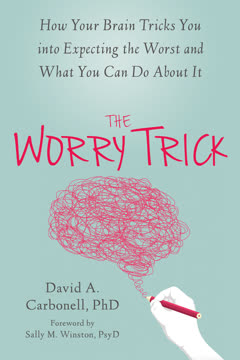
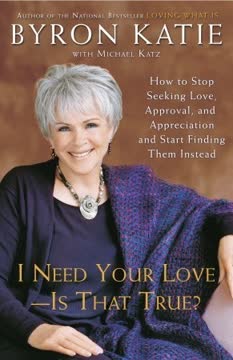
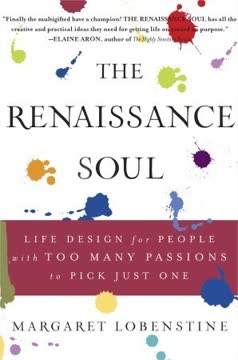
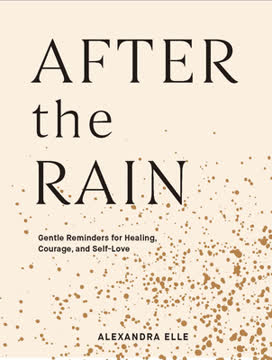
Download PDF
Download EPUB
.epub digital book format is ideal for reading ebooks on phones, tablets, and e-readers.
